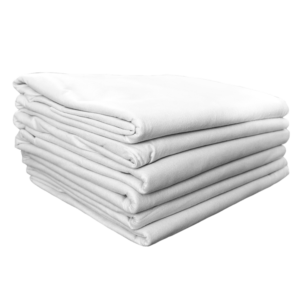
How Long Does a Pool Liner Last?: A Comprehensive Guide
Generally, pool liners last between 6 to 12 years. While this is a good baseline, the lifespan can vary based on usage, maintenance, environmental conditions, and other factors.
Factors Affecting Pool Liner Longevity
“How long does a vinyl pool liner last?” is one of the most common questions we get here at LinerWorld. But the answer isn’t always simple. Understanding the factors that can impact your liner’s lifespan can help ensure your pool remains in top condition for years to come.
Pool Liner Thickness
The thickness of the vinyl used in the liner is a significant determinant of its durability. Thicker liners tend to last longer and are more resistant to punctures, tears, and UV damage.
For most residential above ground pools, a pool liner thickness of 20 mil or 25 gauge provides a good balance between cost and durability. LinerWorld’s vinyl pool liners are 25 gauge, ideal for moderate usage for most residential pools.
Installation
Proper installation is critical to ensuring the longevity of your liner, but many pool owners make mistakes in this area. Poor installation can lead to premature wear, wrinkles, stretching, and tears.
Don’t rush the process. Make sure it’s a sunny, warm day with a temperature of 80 degrees Fahrenheit or higher. Take time to prepare your yard and remove rocks, sticks, and other debris that could damage or puncture the liner.
Follow our pool liner installation guide or work with a pool professional to ensure proper installation.
Chemical Balance
Chemicals can have a considerable impact on your liner. While they’re necessary for maintaining water quality, excessive use can weaken, stain, and deteriorate your liner.
Keep the following levels in mind, and check your water chemistry frequently.
- pH Levels: 7.2-7.8. High or low pH can deteriorate the liner material, causing it to become brittle or overly soft.
- Chlorine Levels: 1.0 – 3.0 ppm (parts per million). Excessive chlorine levels can bleach and weaken your liner.
- Calcium Hardness: 200 – 400 ppm. Proper levels help prevent scaling and etching, which can damage the liner surface.
Sunlight and UV Exposure
Pool liners exposed to direct sunlight for extended periods can suffer from UV damage. UV rays can cause the liner to fade and become brittle over time. Using a pool cover can help mitigate this effect.
Frequency of Use
Frequently used pools naturally experience more wear and tear on the liner. Regular use increases the risk of physical damage from swimmers, pets, and cleaning equipment, leading to normal wear over time.
Maintenance Practices
Regular cleaning and maintenance are crucial. Debris, such as leaves and twigs, can cause abrasion and damage. Keeping the pool clean and free from sharp objects can extend the liner’s life.
Climate
Extreme temperatures can affect the liner’s longevity. The freeze-thaw cycle can cause liners to crack or tear in areas with harsh winters. Conversely, extreme heat can accelerate the deterioration of the liner material.
Water Temperature
Excessively high or low water temperatures can also affect the liner’s durability. Moderate and consistent water temperatures are ideal for prolonging the life of your liner.
Tips to Extend the Life of Your Pool Liner

Extending the life of your pool liner ultimately depends on vigilant and thorough maintenance. Taking proactive steps can significantly extend its longevity.
Regular Inspections
Periodically inspect your pool liner for signs of wear, such as fading, tears, or wrinkles. Early detection of issues can prevent more severe damage. The best time to do this is when cleaning your pool.
Proper Chemical Management
Test your pool water regularly and maintain balanced chemical levels. Invest in a good quality testing kit and adjust chemicals as needed.
Use a Pool Cover
Cover your pool when not in use to protect it from UV rays, debris, and extreme weather conditions. At LinerWorld, we carry both inground and above ground pool covers in a variety of shapes and sizes to meet your needs.

Minimize Risk
In many cases, swimmers themselves end up damaging the liner. Minimize risk of by following some common sense rules around the pool.
- Avoid using glassware around the pool.
- Use extra caution when doing yard work around the pool.
- Keep explosives and fire (fire pits, candles, tiki torches, grills, fireworks, etc.) a safe distance away.
- Don’t allow dogs and other pets in the pool (or monitor them closely).
- Pick up garbage and food to avoid drawing in wildlife and pests that could damage the liner.
- Make sure all swimmers know the pool safety rules and enter/exit the pool properly.
Invest in the Right Accessories
To further extend the lifespan of your pool liner, consider using these protective products:
- Liner Pads: These pads are placed beneath the pool liner and provide an extra layer of protection against sharp objects, roots, and other debris that could puncture the liner.

- Foam Pool Cove: Foam cove is installed along the base of the pool wall where it meets the floor. It helps prevent the liner from stretching and tearing at the seam, reducing stress on the liner.

- Ladder Pads: Placing a pad beneath your pool ladder prevents the liner from getting damaged by the ladder’s constant pressure and movement.

Professional Maintenance
Consider having a professional service your pool about once a year to ensure all aspects, including the liner, are in good condition. Paying a little extra for this service can help you save significantly on maintenance and repair costs down the road.
Signs You Need to Replace Your Pool Liner
Like it or not, you’ll probably have to replace your pool liner at some point. Here are a few signs you need to replace your liner:
- Fading and Discoloration: While some fading is normal, significant discoloration can indicate the liner is nearing the end of its life.
- Tears: Small tears can often be patched with our vinyl patch kits, but if you notice large or multiple areas of damage, it’s likely time for a replacement.
- Stretching or Wrinkles: If the liner starts to lose its elasticity and can’t properly adhere to the pool walls and floor, which compromises its function and appearance.
- Leaking: A noticeable drop in water level can indicate a leak. While pool leaks can sometimes be repaired, recurrent or severe leaks often necessitate a new liner.
- Stains and Mold: Persistent stains or mold growth that cannot be cleaned off may suggest that the liner material is deteriorating.
Check out these resources to learn more about replacing your liner:
- Above Ground Pool Liner Replacement FAQs
- How to Choose A Replacement Pool Liner
- Can My Vinyl Swimming Pool Liner Be Repaired?



